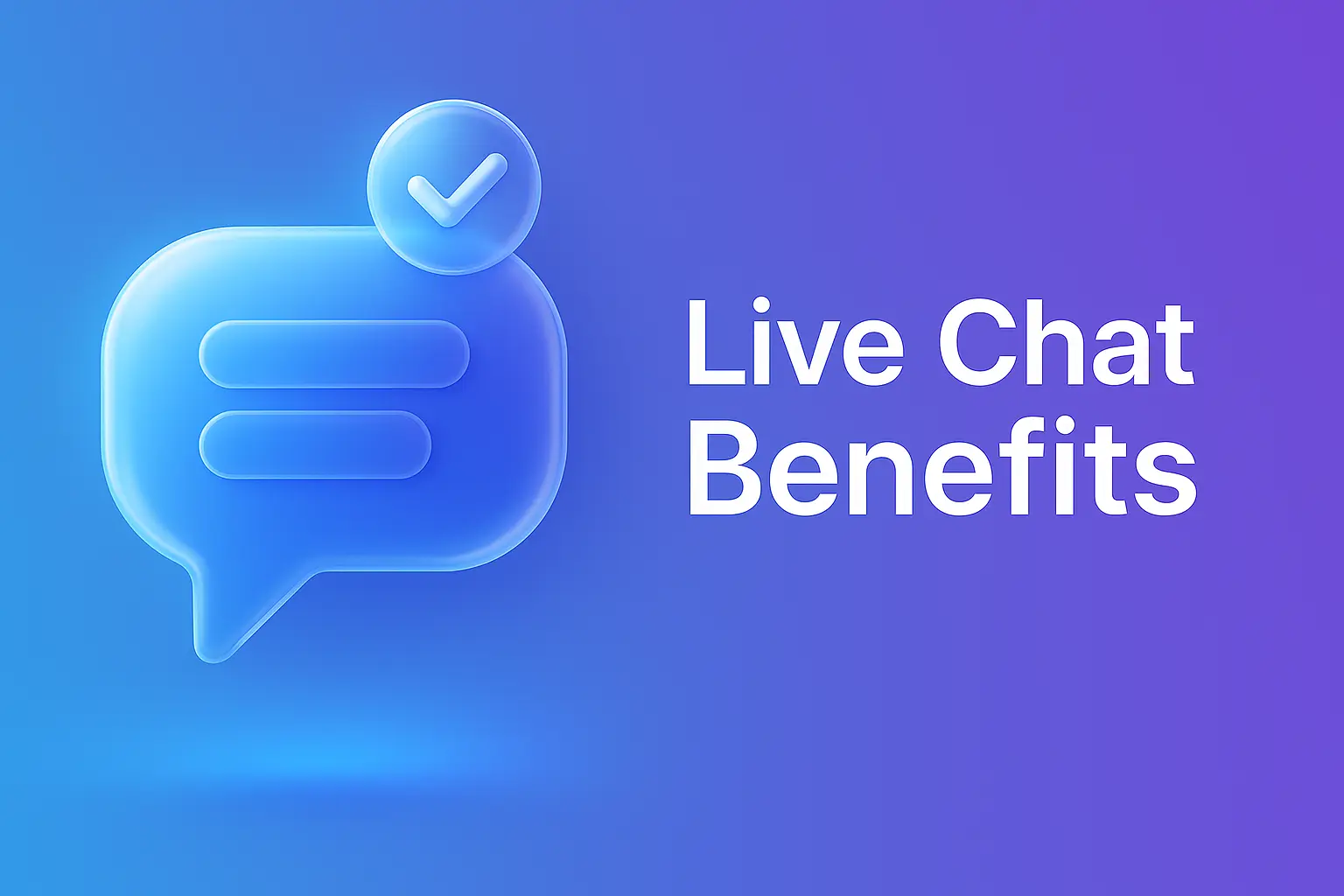15 Effective Ways to Increase Website Conversion Rate (2024)
- July 11, 2018
- 32 mins read
- Listen
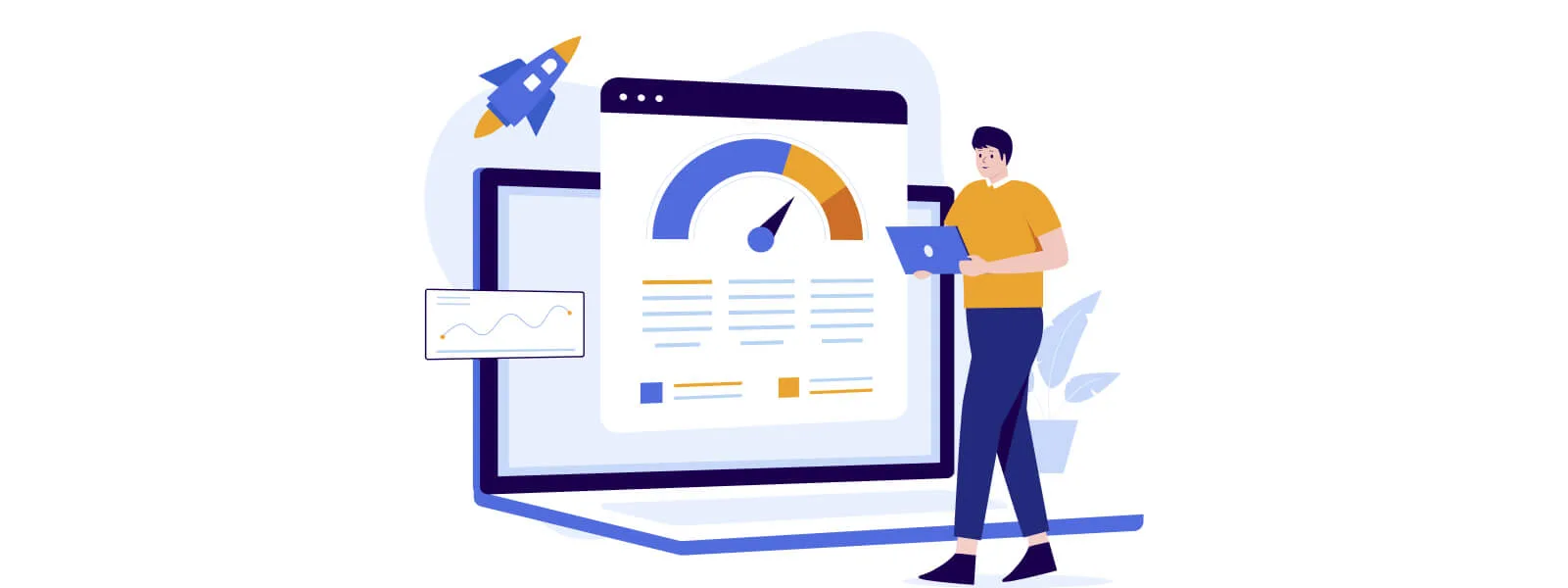
Have you ever landed on a website and immediately felt confused? Did the copy & design fail to inform you who the company was, what they sold, or why you should buy from them? This terrible user experience results from a poor branding strategy or a lack of a brand in the first place.
If you want your company to succeed in the modern marketplace, you must have a professional website with a good knowledge of website conversion rates. It represents your brand and acts as the backbone of your business by supporting all the digital marketing efforts.
Having a strong brand and communication strategy can position your business competitively in your industry. Without it, your website and brand become void. Considering that consistent presentation of a brand increases revenue by 23% on average, your business needs to have a well-designed website that helps in building brand credibility.
As both are interrelated it is vital to focus on increasing the website conversion rate.
Here are some staggering stats that validate improving website conversions is crucial.
- A typical website conversion rate is about 2.35% on average. But the top 10% of companies are seeing 3-5x higher conversion rates than average.
- 7 in 10 marketers using conversion rate optimization (CRO) look to results to inform other marketing initiatives.
- User-generated content can increase your CR by 161%.
What is Website Conversion?
A website conversion refers to a scenario wherein the customer completes the desired action on your website by clicking the CTAs, signing up for a newsletter, sharing a blog post to social media, or buying a product. The percentage of people who complete your desired action refers to the conversion rate.
Website conversion is a very important factor in any type of marketing strategy as getting users to do what you want them to do is necessary for every business. To increase the website conversion rate is related to the overall business goals.
To achieve an average website conversion rate, you have to first determine what you want your site to achieve for your business. Every business website is built to generate conversions. There are two types of website conversions – (i) micro conversions and (ii) macro conversions.
What is Website Conversion Rate?
Website conversion rate can be defined as the percentage of site visitors that complete the desired action. The action converts the visitors into your customers and varies across different websites.
For example, completing a purchase, membership registrations, email subscriptions, signing up for a trial, downloading an ebook or app, booking a demo, etc.
Website conversion rate is a key metric that helps in determining how well-optimized your website is and shows potential opportunities for greater sales. If your website conversion rate is higher it indicates three main things:
- You are able to capture the attention of the right audience for your products and services
- The website copies, messaging, calls to action (CTAs), etc. resonate with your audience
- You have put in the right efforts to make your user journey easier and intuitive.
The website conversion rate improves by enhancing the user experience.
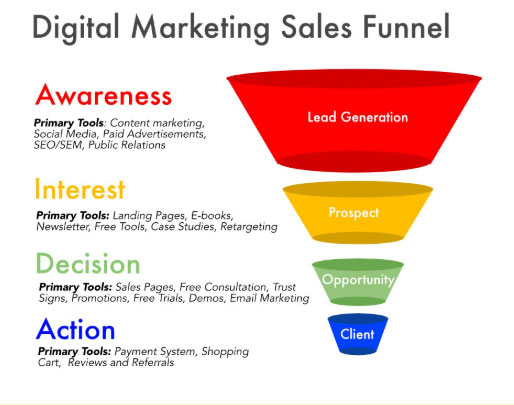
How to Increase Website Conversion Rate? (Tips & Best Practices)
Getting a good flow of visitors to your website is great, but if they are not converting by taking the desired action, it means something is not working. It is critical to identify what are the loopholes in your website and work smartly to get over it. Let us discuss the tips and best practices for better website conversion optimization.
1. Assist your Website Visitors with Live Chat
Longer wait times are a frustrating factor as to why visitors hang off. Studies say, 59% of customers are more likely to buy when brands answer their queries in under a minute. Implementing live chat is an excellent way to increase website conversion rates.
Live Chat empowers you to assist your website visitors in real-time, which is what they expect. When you engage customers when they need the most, there is a positive impact on conversions and customer satisfaction giving you the best return on investment (ROI).
For example: by implementing REVE Live Chat you can improve your customer experience, provide contextual support, and proactive assistance, reduce cart abandonment, and ensure 24/7 availability.
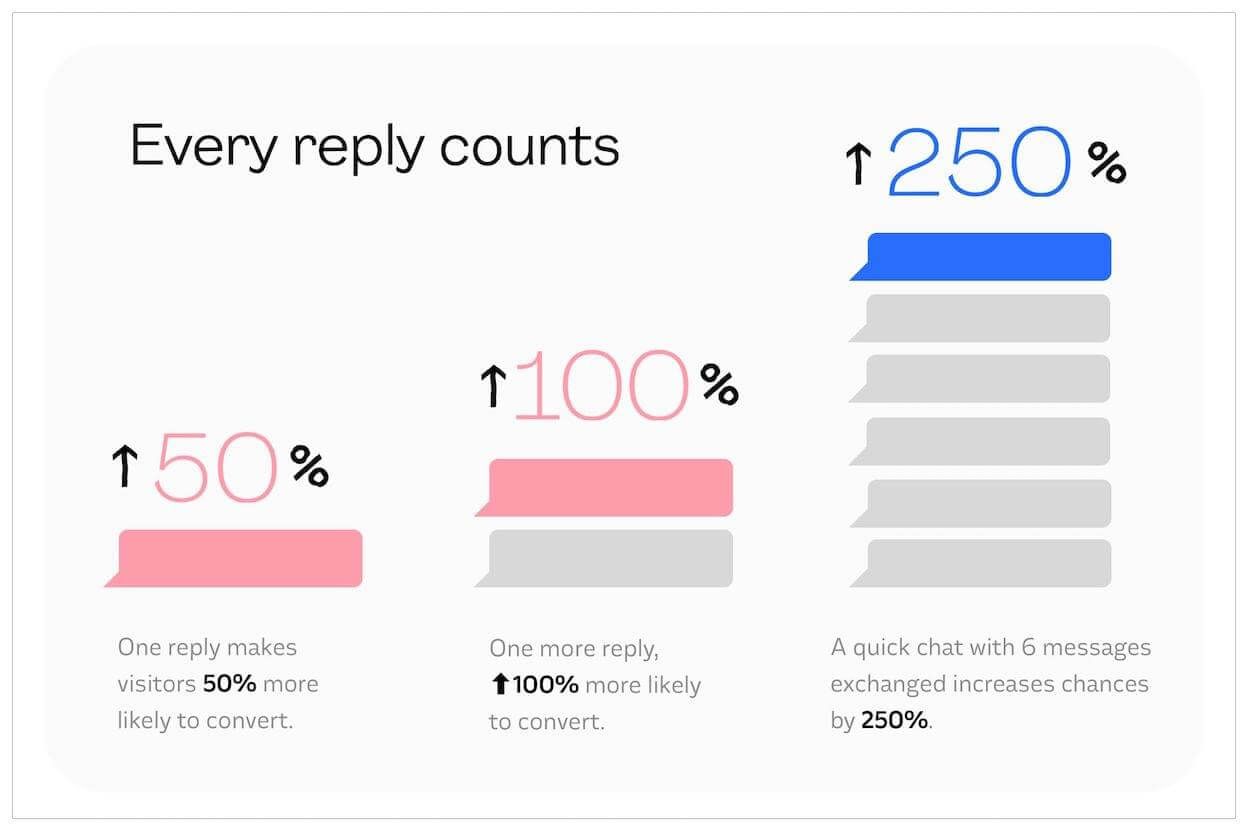
Businesses that offer live chat witness a 34% improvement in customer satisfaction rates and a 2.6x improvement in customer care costs.
How does Live Chat help to improve your website conversion rates?
- Increase sales conversions – Promptly addressing the sales queries impacts positively of conversion rate. Goinflow says that there was a 3.84% increase in conversion rates, with a 6% overall lift in revenue. When you assist customers with the right information in real-time, it helps them to make quicker decisions.
- Higher customer lifetime value (CLTV) – Personalizing customer service chats with empathy statements can drive conversion and customer satisfaction that converts visitors to loyal customers by increasing their lifetime value (CLTV).
- Delight your customers – E-marketer says, “More than 60% of consumers would return to a website offering live chat.” It helps to deliver real-time responses to customer queries, unlike reactive channels that greatly impact buying decisions.
2. Deliver the Right Value Proposition
The value proposition is a major thing that needs to be cross-checked on your website. If you get it right, it will be a huge boost in website conversions. If you can perfect your value proposition, you can increase your average website conversion rate and improve your marketing strategies across many channels. The value proposition has a great role in creating the first good impression by conveying to the potential customers that you have exactly what they need.
Essentially, it is the brand’s promise to deliver great value to the customers via clear features and solutions. So, value propositions need to be crystal clear on your website and it should have a certain sense of urgency to compel customers to purchase your products or services.
Here are some best practices to be followed for using value propositions to increase web conversions:
- Highlight the benefits your customers will receive to make your value proposition work.
- Strive for the clarity of your value proposition – What is it? For whom? How is it useful?
- Use the right language for your value proposition. It should join the conversation that’s already going on in the customer’s mind.
3. Create Compelling Headlines
One of the simplest ways to increase your website conversion rate is by creating compelling headline copies to grab your visitor’s attention. Whether developing your website, select the right messaging that will resonate with your audiences, from their point of view.
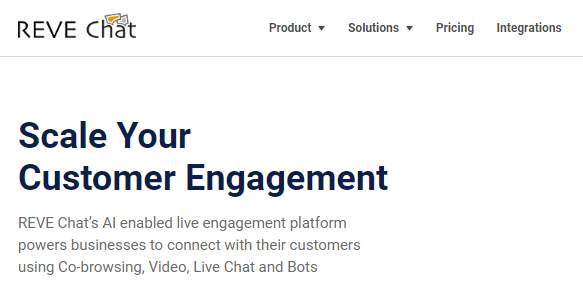
As per Conversionxl.com research, “97 percent of people pay attention to the headline of a content.”
A website infused with the core messaging can:
- Increase visibility among the right audience and improve the conversion rates.
- Improve your leadership profile and position as an industry expert.
- Bolster your lead generation.
If your headline copies are not clear visitors might get confused and end up declining your website. So, it is imperative that you know your target audience and set messaging accordingly.
Pro Tip: Brand messaging should always be specific to articulate benefits, not the features. And to connect with the audiences you are targeting from their standpoint.
4. Strengthen your Call-To-Action (CTA)
If you want to set your website apart from others then a call to action (CTA) is an important marketing strategy.
The key to making your CTAs stand out is using the right language according to situations and considering their placement carefully. The business profits and revenue greatly depend on judiciously using CTAs.
Note: It is recommended not to use multiple CTA. It will create confusion and end up diluting the main goal of conversion.

You can take special care to make your CTA prominent and direct – giving it special emphasis by making it blue. Having a CTA on the landing page increases conversion rates by 80 percent.
Follow the below guidelines that will help you to increase your conversion rates.
- Place your CTA on the landing page – It is useless if you have a stunning CTA but nestled behind the landing page with the navigation menu. Make sure that the CTA should be the first thing visible to the customer.
- Keep your CTA simple – If you don’t want to overwhelm your customers with too many choices it might decrease your conversion rates. Keep it as simple as possible.
- Personalize your CTAs – Personalized CTAs perform 202% better than basic CTAs. There is a subtle difference, instead of offering a “free download,” the personalized CTA promises to show shoppers “how to attract more customers,” which is a much more compelling message.
5. Make Navigation Easy to Use
According to Stanford University, “46.1% of people say a website’s design is the top criterion for deciding brand credibility. So it’s extremely important that your design looks professional.” Simple and easy navigation is something everyone looks for when they land your website. Great navigation is one of the most important aspects of website conversions.
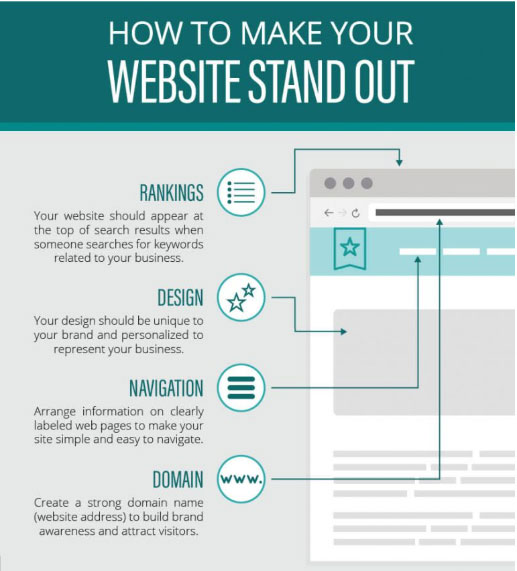
To increase your website conversion optimization(CRO), you need to build your website by understanding your audience, how they will interact with your content, and figuring out the most intuitive ways of organizing and representing it.
How to improve website conversion by keeping website navigation simple?
- Focus on user experience – Building a website prioritizing customer experience helps users to navigate through your website smoothly.
- Proper layout – Choosing the proper website layout is very important as it encourages visitors to spend more time and explore your site.
- Check on colors & style – Using the right colors and styles that match your brand successfully creates a good impression about your website.
6. Make your Website Visually Appealing
According to the Stanford Persuasive Technology Lab, 46% of site visitors say a website’s design, including font size, color scheme, layout, and site navigation, is the #1 criterion for discerning the credibility of the company.
So your design must look professional.
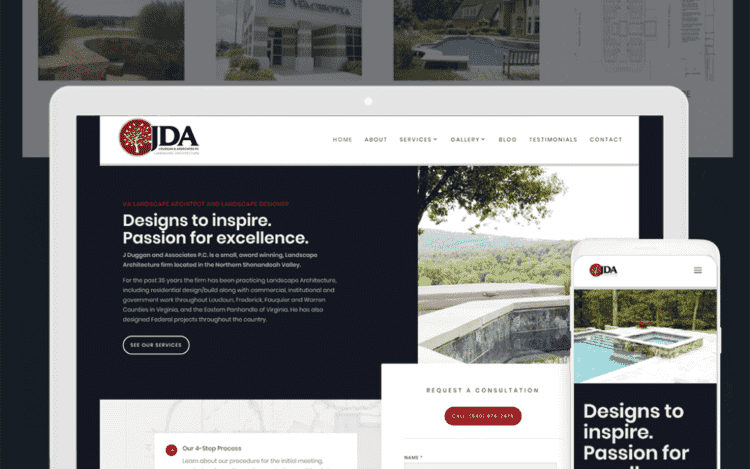
If your website is not attractive, customers will actually leave your site altogether. Here are some tips for great visual design to increase website conversions.
- Communicate credibility – If you have an amazing product, but no one understands what you are saying, then you won’t be able to sell it.
- Design & color – A visually appealing website first catches your eye and provides an instant layer of communication.
- Picture & graphics – The photos and graphics used can go a long way toward communicating an authentic, solid first impression.
7. Improve Conversion Rate Using Chatbots
Deploying Chatbots to automate your support tasks can be excellent website conversion tips. Bots empower you to reach out to a bigger audience and help your business to improve website conversions. Ubisend found that 35% of customers want to see more companies using chatbots. Chatbots can help to prequalify leads during peak hours or when your sales agents are busy or unavailable. You can prepare industry-specific questionnaires and use them to qualify your sales prospects, then direct them to the sales team or schedule an appointment.
By engaging with customers 24×7, you can answer their simple queries promptly and reduce the number of support tickets raised.
How bots can improve website conversion rates?
- Prompt response – AI Chatbots can immediately answer sales FAQs and improve the chances of conversions.
- Qualify leads – Bots can be used to qualify leads by asking sales questions and directing them to the next level of your sales funnel.
- Scalability – Chatbots can be scaled easily when there is a high volume of chats without altering the service quality and extra resources.
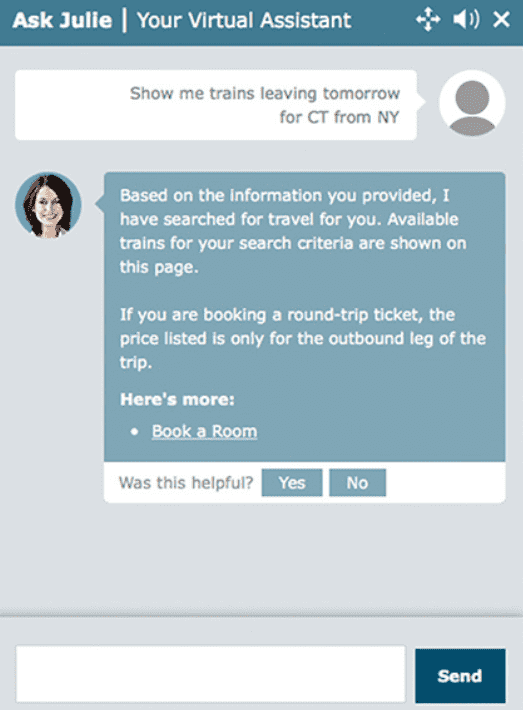
Amtrak used a chatbot named Julie to answer 5 million questions a year, save $1,000,000, and increase bookings by 30%. The bookings through the chatbot produced 30% more revenue.
8. Add Social Proof
Social proof is powerful.
Social proof plays a huge role in shopper’s buying decisions. When someone is mulling over a purchase or trying to decide between two different brands, they’ll often turn to other people that have experience with the products for guidance. 70% of people said they trust consumer opinions posted online, eCommerce sites are wise to use social proof to increase buyer confidence.
Social proof can be in the form of testimonials, reviews, star ratings, and real-time statistics. Businesses can help increase conversions by validating the buyer’s decision, which is why it’s essential to incorporate it into your marketing strategy. In the long run, it helps in building brand credibility.
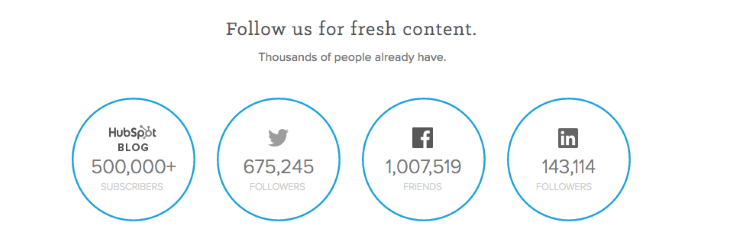
Source: Hubspot
How social proof can increase website conversion rates?
- Build customer trust that validates and simplifies customer’s buying decisions.
- Social proof adds credibility to your business and improves brand presence.
- Using testimonials is a common form of social proof. 92% of people will trust a recommendation from a peer, and 70% of people will trust a recommendation from someone they don’t even know.
9. Show your Brand Credibility
How much time and effort do you put into boosting your brand’s credibility for making your marketing strategy successful?
Customers are skeptical by nature and it is for you to convince them that buying your products or services is a good choice. You need to instill confidence in your visitors that your brand is credible and helps to resolve their problems thus, worth investing in. Brand credibility is vital to prove your worth to potential customers. It helps you to generate more leads, boost conversions, and enhance engagement on your website.
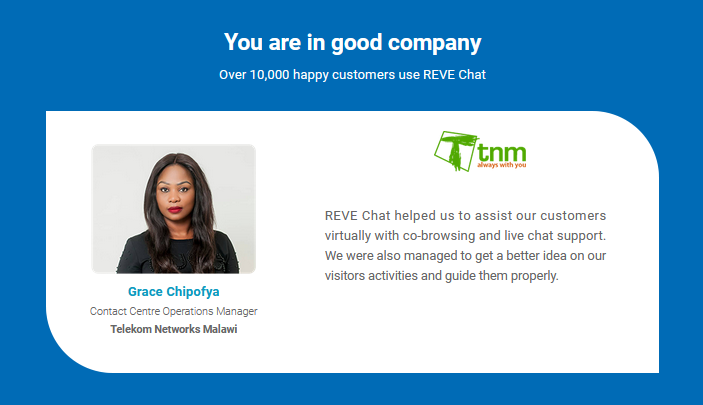
Testimonials are a great way of strengthening your brand credibility and increasing website conversion rates significantly. Testimonials are a vital part of your marketing strategy as they can persuade consumer decisions. Hence leveraging testimonials can be a great website conversion tip to capture customers with the right information at the right time.
10. Perform A/B Testing
Businesses expect their visitors to take action on their website. The more optimized is your funnel, the higher the conversion rate. A/B testing is the most popular form of website conversion rate optimization (CRO), with 56% of marketers using this method. A/B testing is a great way to optimize your website’s funnel. The web variant out of two that gives higher online conversions is the winning one and can help you optimize your site for better results. The conversion metrics are unique to each website. For eCommerce, it may be the sale of products, while for B2B, it may be the generation of qualified leads.
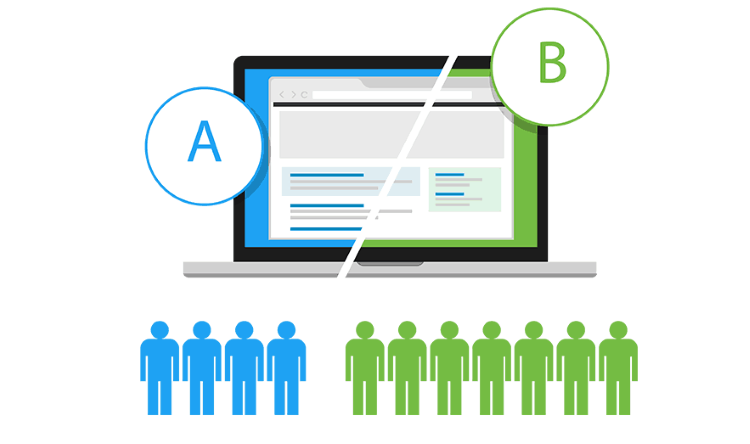
Source: Reliablesoft
A/B testing is one of the components of the overarching process of Conversion Rate Optimization (CRO) using which you can gather both qualitative and quantitative user insights and use them to understand your potential customers and to optimize your conversion funnel.
How does A/B testing help to increase website conversion rate?
- Resolve pain points of website visitors by using the data collected by behavioral analytics tools such as Google Analytics, and heatmaps to resolve visitor’s issues.
- Gain better RoI from the existing traffic by allowing you to make the most out of your existing traffic and increase online conversion without having to spend on acquiring new traffic.
- Reduce the bounce rate by testing multiple variations of a website element until you find the best possible version. It improves your user experience, making visitors spend more time on your site and reducing bounce rates.
11. Reduce Friction to Improve Website CRO
Friction occurs when website visitors come across your offer. They have their own set of thoughts about taking the offer. It is difficult to address customer hesitations online. The solution is to address all the possible issues in your sales copy right away.
How can you reduce friction?
Make a note of all the possible hesitations and objections your potential customers might have. Add maximum information to your sales copy to eliminate or alleviate those concerns.
Note: You can use website surveys to identify visitor frustrations. You can collect feedback from actual visitors in real-time, while they are experiencing your website.
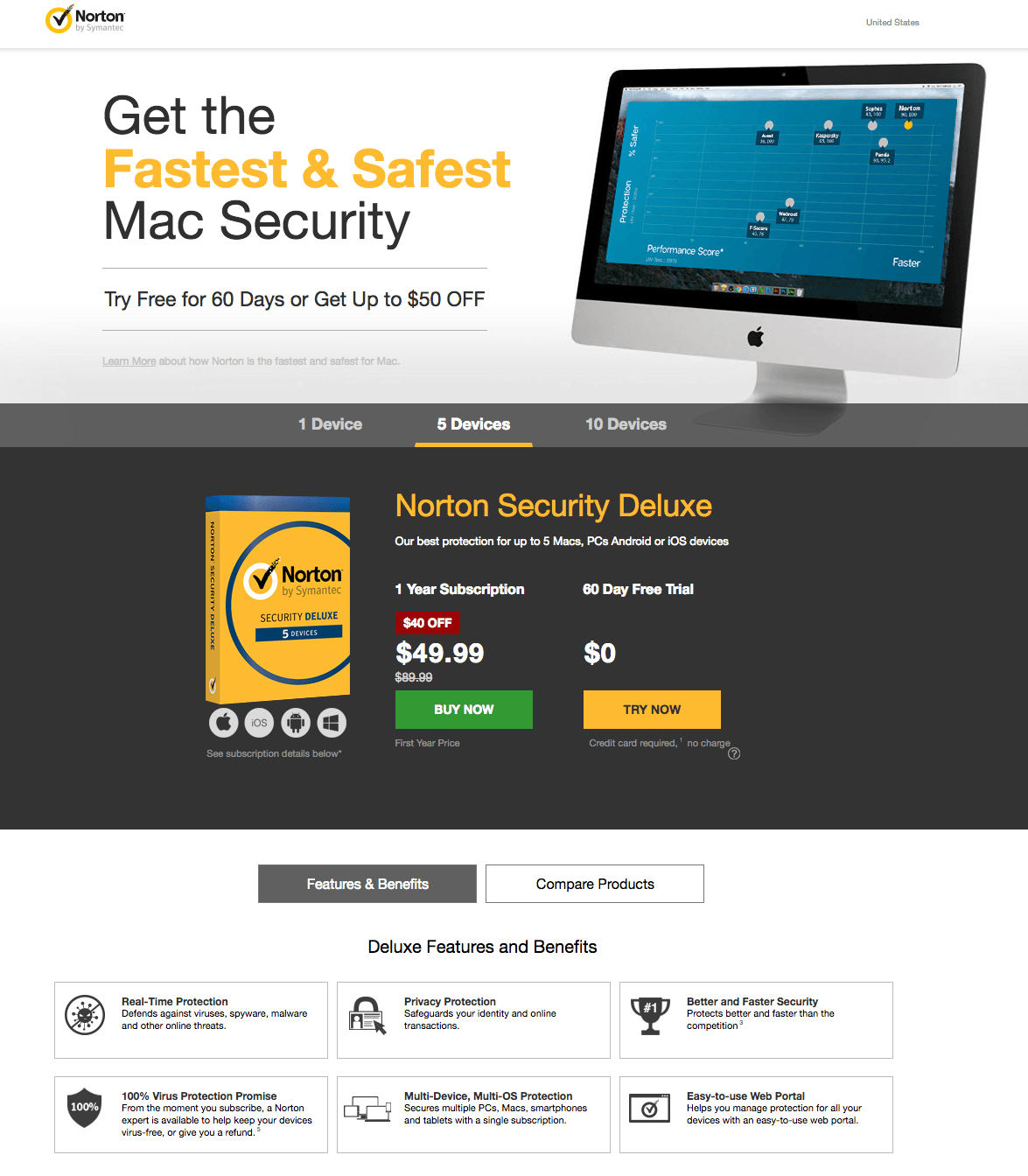
Here is an example of Norton that uses the best practices to increase the average website conversion rate. You can follow the tips to increase your site conversion. These tips could also serve as powerful thank you landing page examples and ensure a boost to conversion.
- The headline conveys the benefit immediately. Visitors to this post-click landing page quickly see what Norton Security is offering. Precise copy provides visitors with the information they need to make a decision.
- The gray and white buttons allow visitors to learn some key features and benefits and compare three Norton products. Award badges highlight industry accolades Norton has recently won.
- Two collapsible tabs at the bottom provide detailed technical information and free trial details. These tabs help keep the page simple and not overwhelming with the copy.
12. Add Incentives to Take Action Right Away
Note that your prospects take action for their personal gains. And the best way to encourage visitors to take action right away is by offering instant offers and incentives. Discounts & incentives came in as the top-ranking tactic for driving loyalty with 61% of consumers saying they use them. For conversion optimization, incentives are factors that motivate the visitor to act immediately. They play on the potential customer’s emotional motivation by increasing the reward for action and reducing the emotion of regret.
How to increase the online conversion rate of your website with incentives and discounts?
Nobody wants to miss out on a good opportunity.
By driving a sense of urgency and triggering fear of missing out (FOMO), limited-time offers (free discount, extended trial, bonus for quick action) nudge consumers to make a quick decision about a potential purchase.
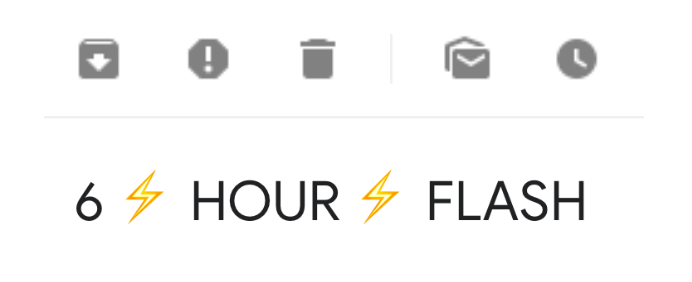
Tarte cleverly uses the word “flash” which already implies urgency, and combines it with the use of emojis to make the subject line stand out.
The use of numbers helps to grab attention, in addition to proving that the offer has a strict time limitation. Using numbers, emojis, and persuasive words, Tarte implies urgency by all means and make you open this email:
Pro tip: While time-sensitive offers work well-converting on-the-fence prospects, you need to ensure that your campaigns reach as many prospects as possible within a limited time. Combined with website popups, email marketing is the best way to achieve that.
13. Add Pop-Up to Increase Website Conversion Rate
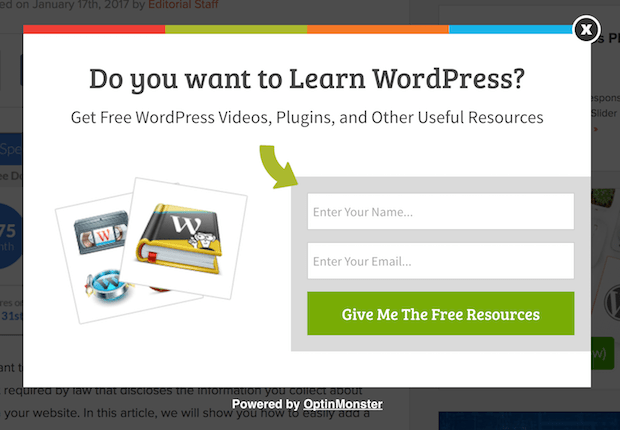
Pop-ups when used correctly, meaning they appear at the right time, in a timely fashion, and offer something relevant to the user, become an effective tool that pushes users to move forward in your sales conversion funnel. The bottom line is, that the more helpful your pop-ups are, the more likely they are to increase conversions on your website.
Here are some quick tips for getting the highest website conversions from them:
- Capture attention on the landing pages – Pop-ups can grab your visitors’ attention at the right moment.
- Experiment with several offers (PDFs, premium content, different products) until you find a winner that you can feel right away.
- Set a cookie by using pop-up tools so the pop-up only appears once per user. Make pop ups easy to close to avoid customer frustration.
Combining all the above tips can give a huge boost in conversions and reduce customer complaints to zero.
14. Optimize your Website Loading Time
The average time it takes a mobile landing page to load is 22 seconds which impacts the average website conversion rate significantly. It clearly means that even the least wait time in website loading can negatively impact user engagement and online conversions. Website loading time is one of the common challenges reported by many customers. Your website pages should load instantly for visitors if you wish them to hand on to your website and smartly engage them with different web elements.
It helps to enhance web engagement and boost customer satisfaction.
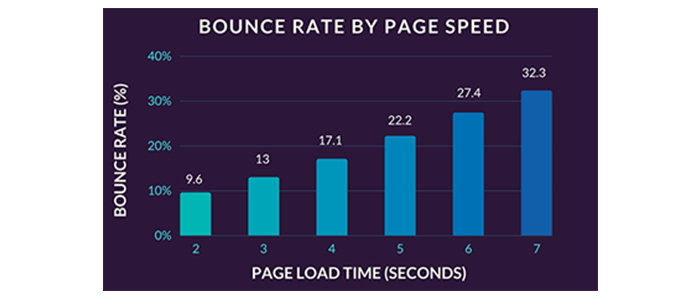
How can you optimize your website loading time to increase average website conversion rates?
Google Analytics offers speed suggestions under the heading speed of the website. There are tools like GTMetrix that can be used to get website speed suggestions if your site happens to load slowly.
15. Make your Website Mobile Responsive
Mobile devices are an integral part of everyday life and we all see our phones once we leave the house. Mobile users accounted for a whopping 56% of website traffic. For website owners, such a shift in how people interact with the web is quite normal. But it increases the urgency you need to have in making your website mobile responsive. If your mobile visitors don’t have a good experience when they land on your website, you are possibly driving away from a huge portion of your potential traffic.
Best practices to appease your mobile as well as desktop op users to increase online conversions:
- A responsive website includes the same content and information on mobile devices you access.
- Make sure that the information users are looking for is easier to find when they land your website.
- You need to ensure that the button sizes are designed to work on the mobile should be good enough.
- At times, mobile users prefer to see the desktop version of your website so allow an easy way to switch to desktop view.
- It is better to use larger font sizes as it makes reading easy on the smaller screen.
Types of Website Conversion Rate
Website conversion rates can be categorized into several types based on the goals of the website and the actions you want visitors to take. Here are the main types of website conversion rates:
1. Lead Generation
It measures the percentage of website visitors who fill out a form to become a lead, such as signing up for a newsletter, requesting a demo, or downloading a whitepaper.
For example: If 1000 visitors come to your site and 50 fill out a form, the lead generation conversion rate is 5%.
2. Sales
The percentage of visitors who purchase on your website. Such as: Out of 500 visitors, if 25 complete a purchase, the sales conversion rate is 5%.
3. Click-Through Rate (CTR)
Click-through rate measures the percentage of visitors who click on a specific link or call-to-action (CTA) within a page.LIKE; If a CTA on a page gets 100 clicks out of 1000 views, the CTR is 10%.’
4. Email Signup
The percentage of visitors who sign up for your email list. Out of 200 visitors, if 10 sign up for your email list, the email signup conversion rate is 5%.
5. Content Engagement
It measures the percentage of visitors who engage with your content, such as watching a video, reading a blog post, or downloading an eBook. For example: If 300 visitors land on a page with a video and 60 watch it, the content engagement conversion rate is 20%.
6. Free Trial or Demo Conversion Rate
The percentage of visitors who sign up for a free trial or request a product demo.
Example: Out of 400 visitors, if 40 sign up for a free trial, the conversion rate is 10%.
7. Bounce Rate
Although technically not a conversion rate, bounce rate measures the percentage of visitors who leave your site after viewing only one page. A high bounce rate might indicate that visitors aren’t finding what they’re looking for, affecting overall conversion rates.
8. Form Completion Rate
The percentage of visitors who start and complete a form. If 100 visitors start filling out a form and 80 complete it, the form completion rate is 80%.
9. App Download Conversion Rate
Measures the percentage of visitors who download a mobile or desktop application from your website. Out of 500 visitors, if 50 download your app, the conversion rate is 10%.
10. Social Media Follows or Shares
The percentage of visitors who follow your social media accounts or share your content on their social media profiles. If 100 visitors view a social media sharing button and 15 use it, the conversion rate is 15%.
Each of these conversion rates helps businesses understand how well their website is performing in achieving specific goals, enabling them to optimize for better results.
How to Calculate Website Conversion Rate (Formula)
There are several conversion rates that can provide insight into what visitors do on your online store. It all comes down to the specific action you are trying to measure and calculating the percentage of total users who take that action.
Here are the most important formulas:
Conversion Rate
This is the main formula among all conversion rate formulas. Use it as the basis for all other conversion rate formulas. This formula can be modified depending on the user action you want to measure.
Conversion rate (%) = (number of visitors who take a defined action/number of all website visitors) x 100
Let’s take a glimpse at the other conversion rate formulas based on the main conversion rate formula:
Sales Conversion Rate
By defining the “execution of a defined action” as “the number of users who have completed a sale”, you will get the sales conversion rate.
Sales conversion rate (%) = (number of sales / total visitors) x 100
Lead Conversion Rate
The term “lead” refers to a way to obtain contact information for a potential customer who could become an actual customer.
For example, if someone subscribes to your newsletter but hasn’t purchased anything yet, there’s a high chance that they’ll become a customer in the future, and so at some point, you’ll need to reach out or create interesting incentives to convert. If you take a look at these numbers, you’ll get the lead conversion rate.
Lead conversion rate (%) = (number of leads/total visitors) x 100
Click-through Rate
Click-through rate is another conversion rate that has some flexibility. This formula can be used to measure the success of your call-to-action (CTA) buttons (e.g. Buy Now, Learn More Today, etc.), email campaigns, and other marketing initiatives.
If the data shows that your efforts aren’t paying off, this might indicate that you should change some design elements of your pages and campaigns (e.g., you might use different text or images). It may also be worth doing A/B testing to show if they’re helpful.
Click-through rate (%) = (number of visitors who clicked / page impressions) x 100
Download Rate
Does your website offer free content or other files available for download? Measure the download rate of users who have visited that page.
Download Rate (%) = (number of downloads/total visitors) x 100
Micro Conversion Rates
If you want to calculate a micro conversion rate, you first need to define a process and its steps. A simple example of a sales process would be:
Click on product > Add to cart > Shopping cart > Complete order
By calculating the conversion rate of users who went to the Shopping cart to purchase the complete order, you get the checkout conversion rate. With this data, you can also find out the abandonment rate.
Checkout conversion rate (%) = (number of sales (completed orders) / number of visitors who visited the checkout) x 100
If your checkout process consists of several steps, you can calculate a micro conversion rate for each step. This way, you can find out at what point in the checkout process your visitors cancel their order.
Example of sales conversion rate calculation:
number of sales = 100
total visitors = 5000
Sales conversion rate (SCR) = 100/5000 = 0.02 * 100% = 2.00% SCR
This means that 2% of all visitors generate a sale in your store. This calculation could also be interesting for special groups of visitors. For example, visitors coming from search engines (perhaps via a special keyword). This can help you find out which marketing actions have worked well and which can be improved.
5 Best Tools for Website Conversion Rate Optimization
Optimizing your website’s conversion rate is crucial for turning visitors into customers. With the right tools, you can analyze user behavior, improve engagement, and test different strategies to maximize your conversion rates. Here’s a look at five of the best tools for website conversion rate optimization:
1. REVE Chat
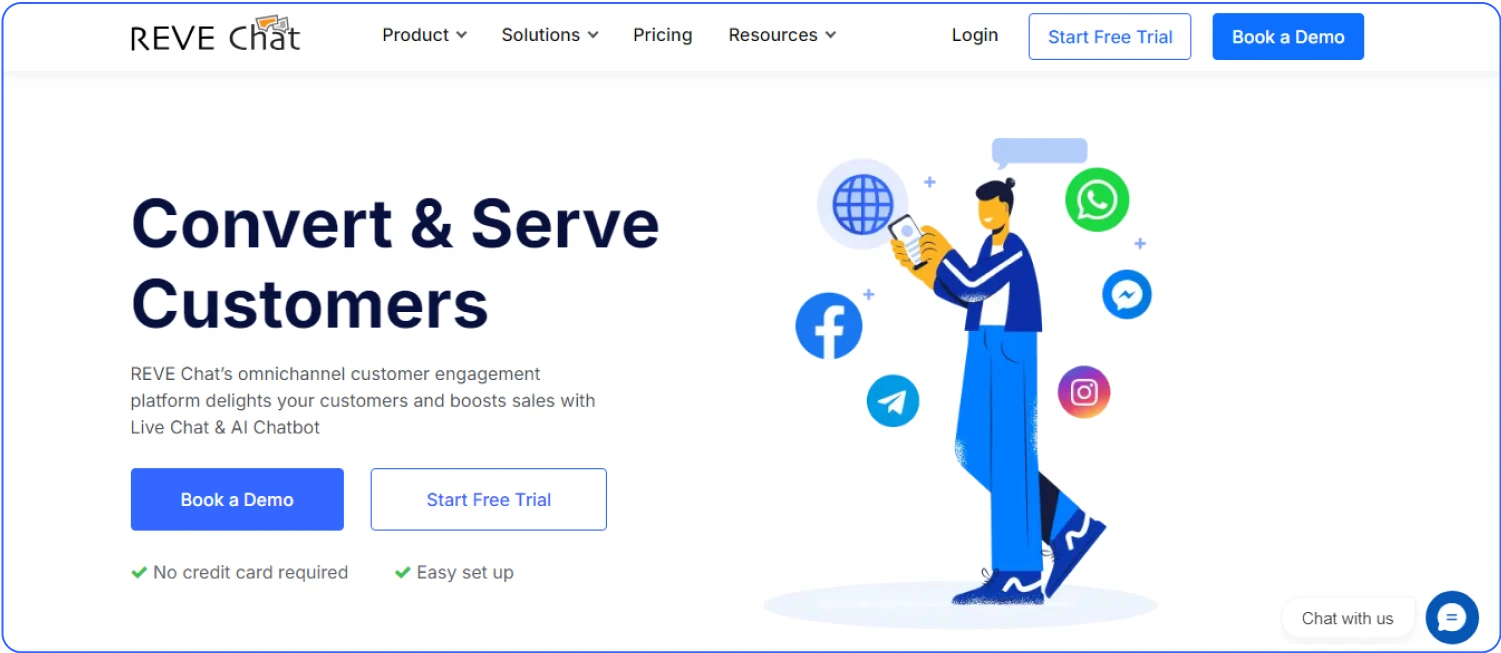
REVE Chat is a comprehensive customer engagement tool that offers Live Chat, Video/audio calls, Co-browsing, Ticketing, and Chatbot services.
Imagine you’re shopping online, but you have a few questions about a product. You can’t find the answers quickly, so you leave the site, frustrated. Now, picture a different scenario. As soon as you start browsing, a friendly chat window pops up, offering to help. You ask your questions, get immediate answers, and feel confident enough to make the purchase. That’s the power of REVE Live Chat.
REVE Live Chat offers real-time engagement with website visitors. It allows instant support and personalized assistance. Its proactive messaging helps reduce cart abandonment, while detailed analytics provide insights to optimize customer interactions and boost conversions.
If you’re looking to give your website’s conversion rate a boost, REVE Chat’s Live chat could be the key. It’s not just about keeping visitors on your site; it’s about guiding them to take that final, crucial step of conversion.
Pricing: Starts from 15$
- Hubspot
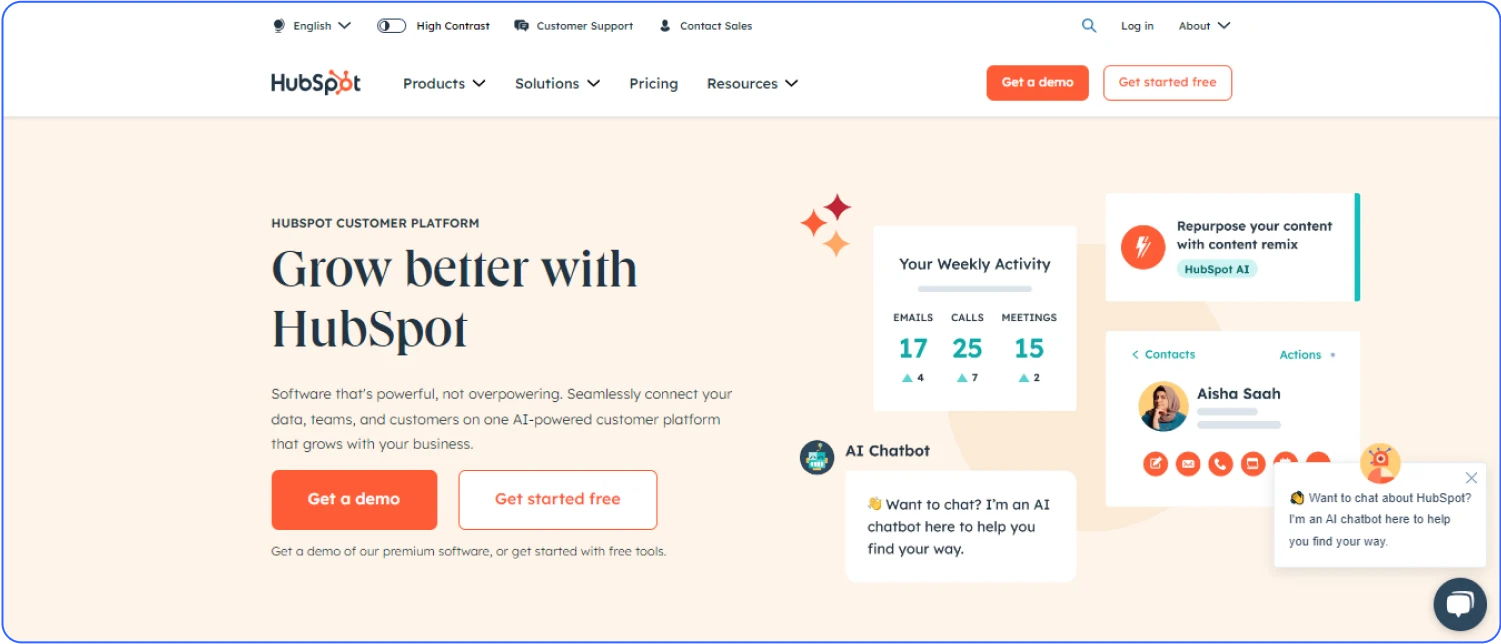
HubSpot is an all-in-one marketing, sales, and service platform that includes tools specifically designed for conversion rate optimization. With HubSpot, you can create landing pages, manage your email marketing campaigns, and use A/B testing to see which version of your content performs better. The platform’s built-in analytics help you track visitor behavior and identify opportunities to improve your conversion strategies.
Pricing: Starts from 20$
- Smartlook
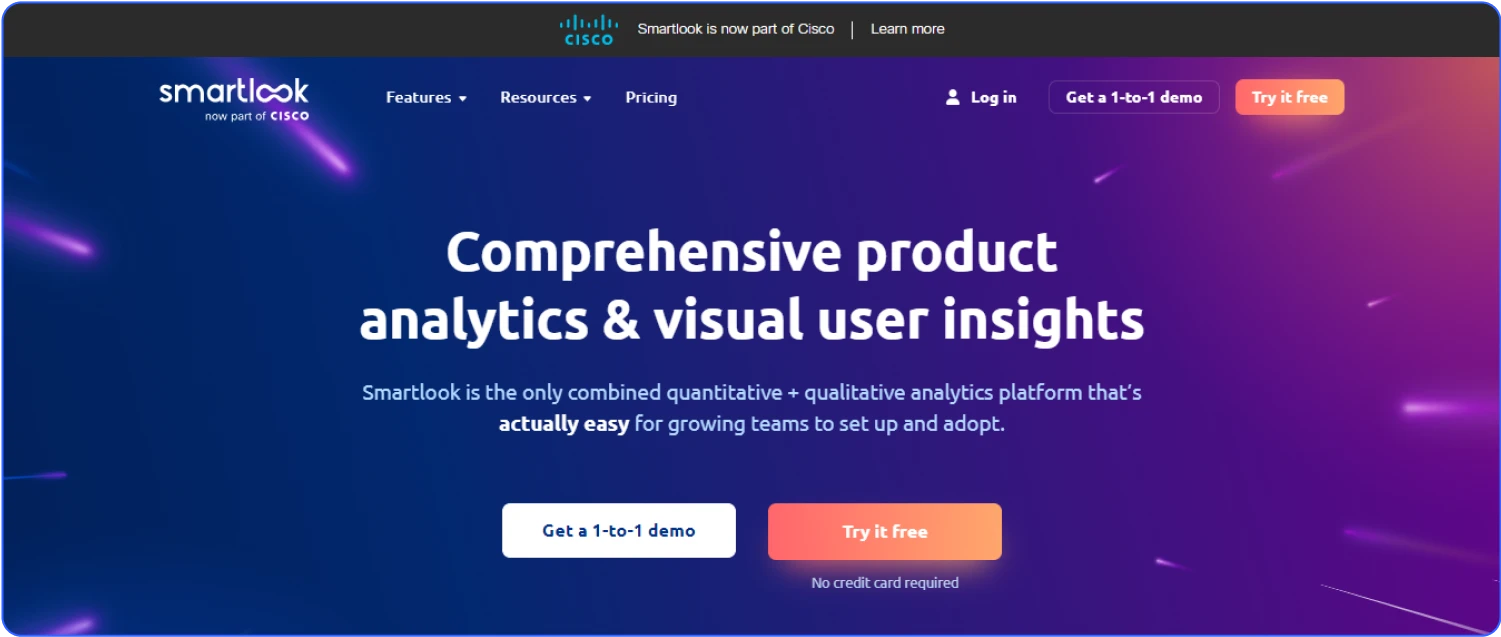
Smartlook is a user behavior analytics tool that offers session recordings, heatmaps, and event tracking. It allows you to see exactly how visitors interact with your website, making it easier to identify pain points and areas for improvement. By understanding user behavior, you can optimize your site’s design and functionality to increase conversions.
Price: For small projects- Free
Deeper analysis (Business Plan)- 55$
- Miro
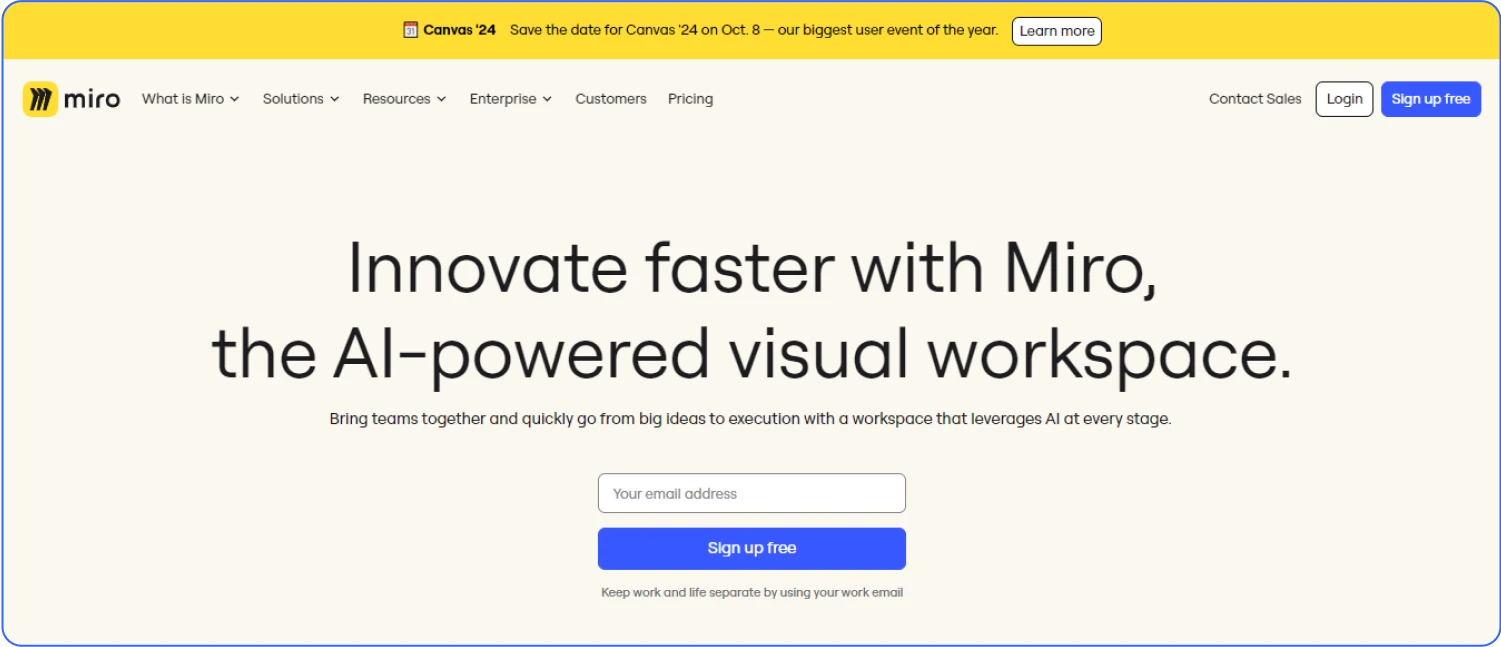
Miro is a collaborative online whiteboard that’s great for planning and brainstorming CRO strategies. While it’s not a traditional CRO tool, Miro’s visual platform allows teams to map out customer journeys, wireframe new page designs, and plan A/B tests. This collaborative approach ensures that your optimization efforts are well thought out and aligned with your goals.
Price: Strats from 8$
- VWO Testing
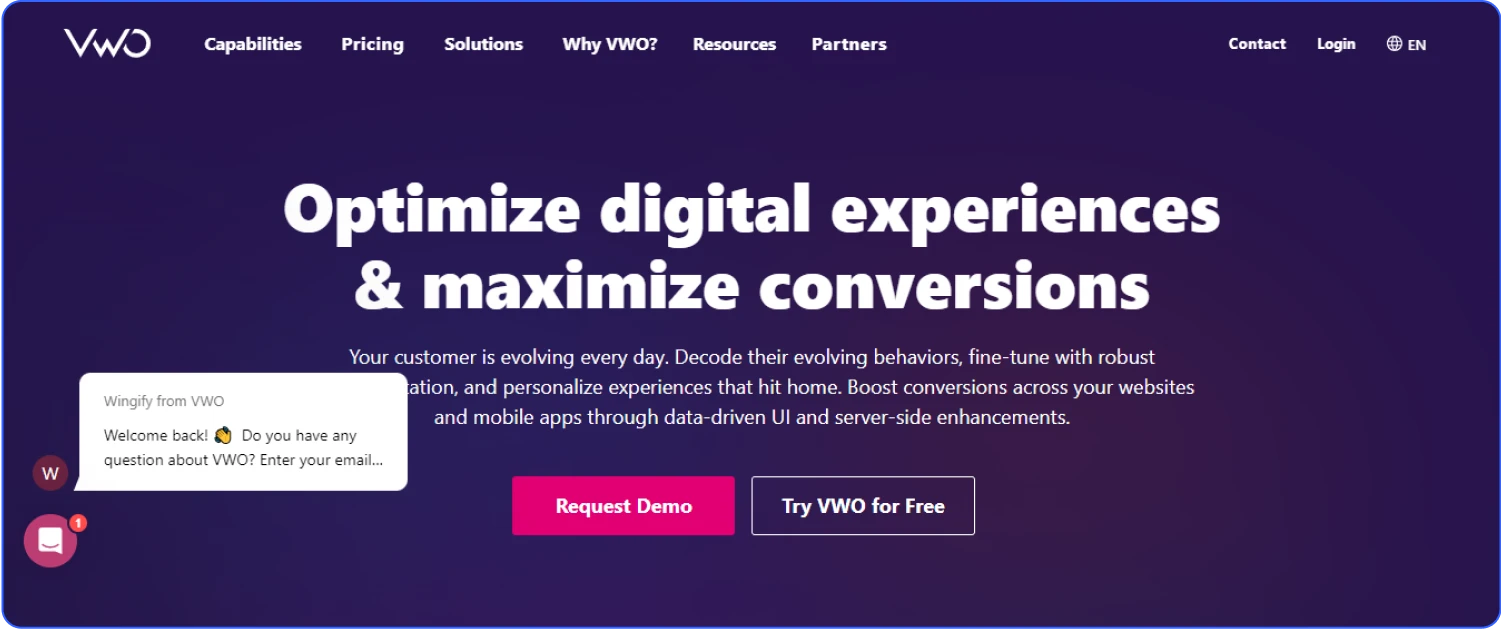
VWO Testing (Visual Website Optimizer) is a robust conversion rate optimization platform that allows you to run A/B tests, split tests, and multivariate tests. With VWO, you can experiment with different versions of your website elements to see which ones lead to higher conversions. It also offers heat maps and visitor recordings, providing valuable insights into how users interact with your site.
Price: Contact for pricing
Using these tools, you can effectively analyze and optimize your website to boost conversion rates. Whether you’re just getting started or looking to refine your strategies, these tools offer the functionality and insights needed to turn more visitors into customers.
Top 5 Website Conversion Examples
High-converting websites are those that effectively turn visitors into customers or leads. These sites typically feature a combination of user-friendly design, compelling content, clear calls-to-action (CTAs), and a seamless user experience. Here are a few examples of websites known for their high conversion rates:
- Shopify
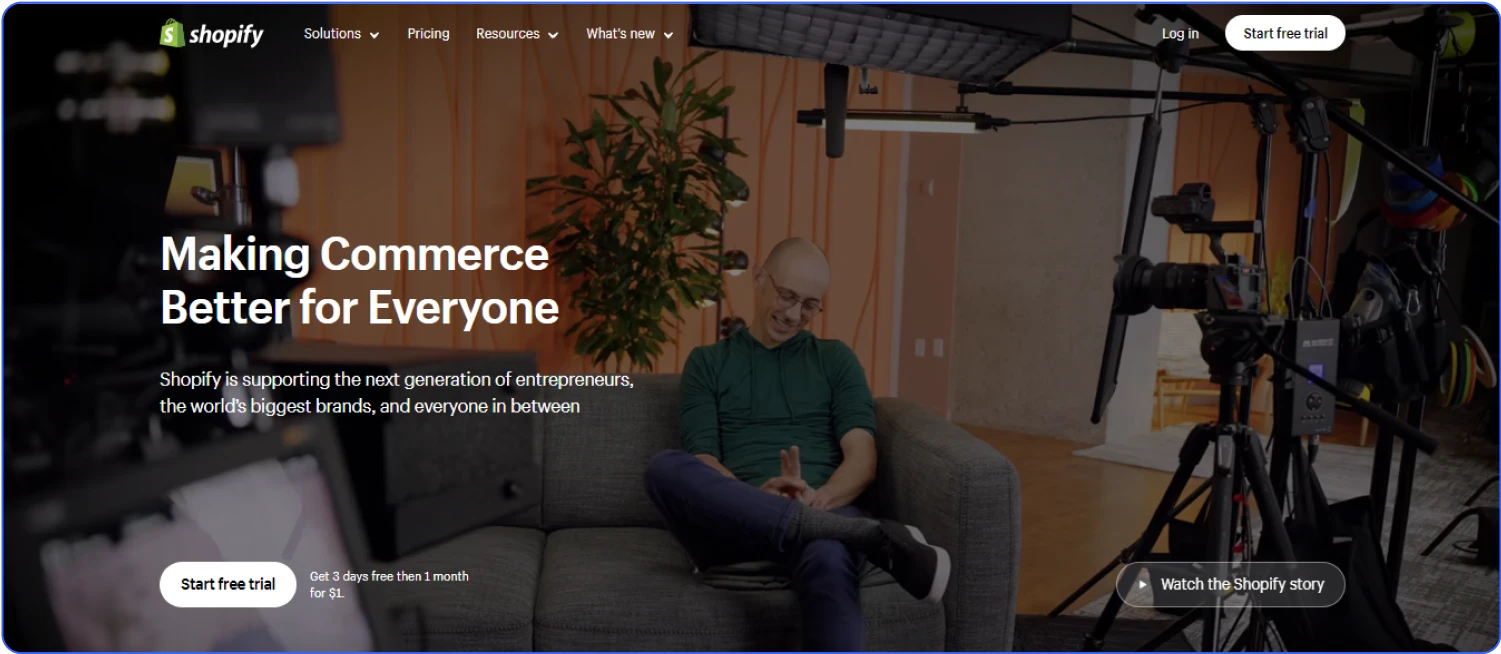
Shopify is an e-commerce Platform for All Businesses. Here’s an explanation of why Shopify is considered a high-converting site.
- Clear Value Proposition: Shopify immediately communicates its value as an easy-to-use platform for building online stores. The homepage is focused on the core benefits, making it easy for visitors to understand what Shopify offers.
- Compelling CTAs: Shopify uses strong CTAs like “Start Free Trial” prominently on the homepage and throughout the site, encouraging users to take immediate action.
- Social Proof: Testimonials from successful entrepreneurs and case studies are highlighted, building trust and credibility.
- User-Friendly Design: The site has a clean and modern design, making it easy to navigate and understand the content.
- Kuwait Telecom
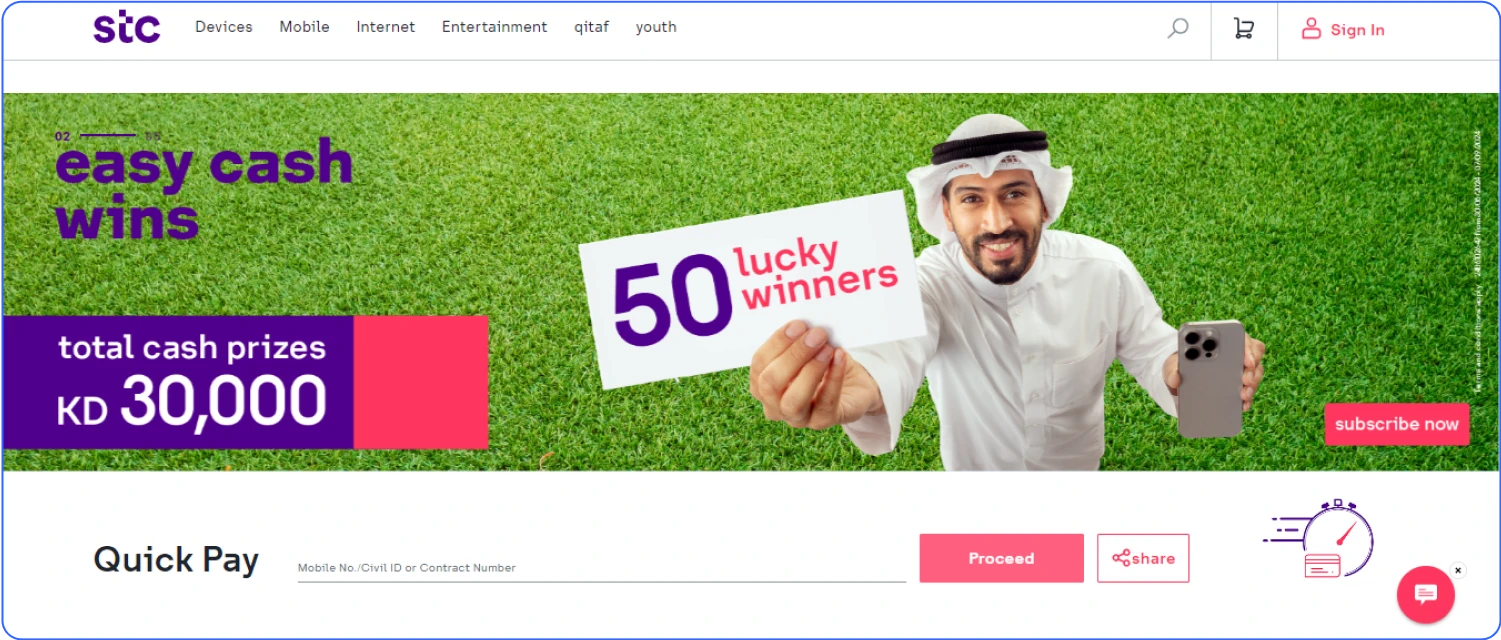
Kuwait Telecom offers numerous opportunities in the fields of telecommunications, entertainment, information, digital, and data transfer services, besides delivering the best customer experience around the clock. Here’s an explanation of why it is considered a high-converting site.
- Localized Content: Kuwait Telecom tailors its content and offers to the local market, making it highly relevant to its audience. This localized approach increases engagement and conversions.
- Clear CTAs: The website uses clear and direct CTAs to guide users toward making a purchase or signing up for a service, reducing friction in the conversion process.
- Mobile Optimization: Given the high mobile usage in the region, the site is optimized for mobile users, ensuring a seamless experience across devices.
- Personalized Offers: The site may feature personalized offers and plans that cater to different customer segments, increasing the likelihood of conversions.
- RealSpace
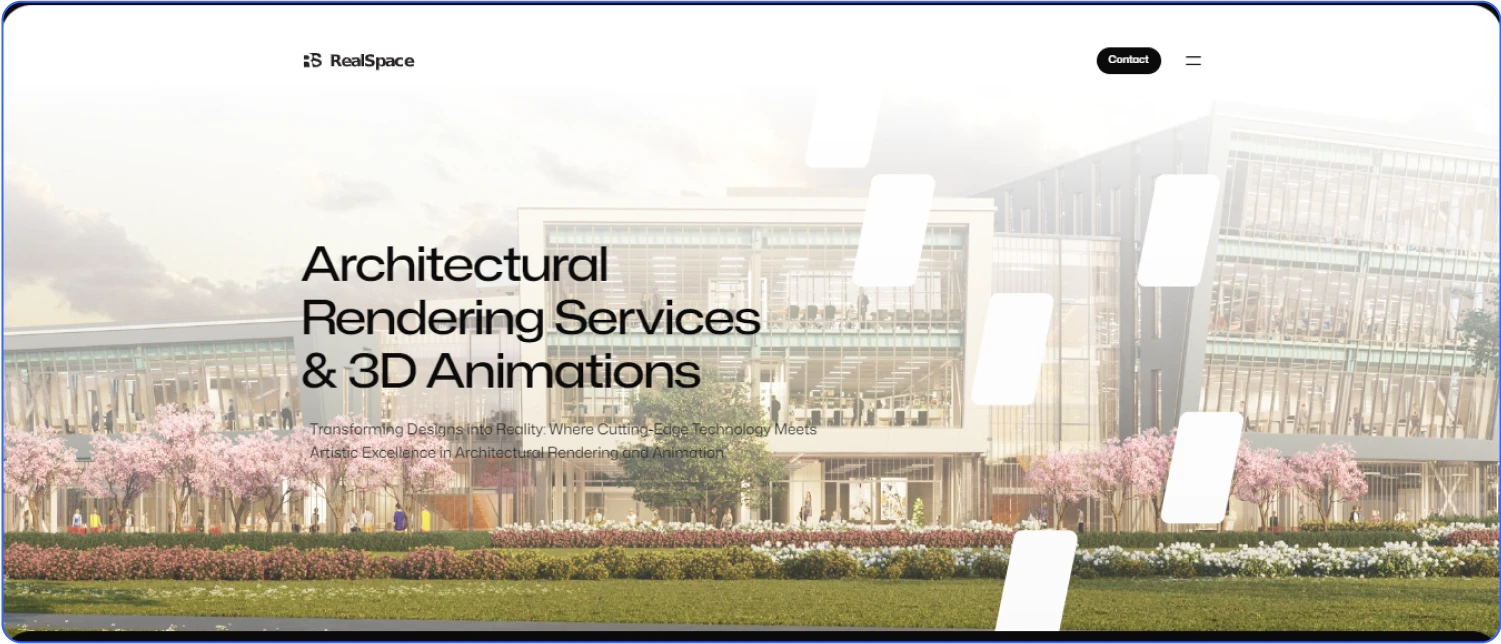
RealSpace makes amazing 3D renders and animations for architectural companies. Here’s an explanation of why it is considered a high-converting site.
- Strong Visual Appeal: RealSpace uses high-quality visuals and a clean design that effectively showcases its products, making it easy for customers to visualize what they are purchasing.
- Detailed Product Information: The website provides comprehensive information about its products, including specifications, benefits, and customer reviews, helping users make informed decisions.
- User Experience: RealSpace focuses on a streamlined user experience, with intuitive navigation and a simple checkout process that minimizes cart abandonment.
- Trust Signals: The website may include trust badges, secure payment options, and clear return policies, all of which contribute to a higher conversion rate.
- Hyer
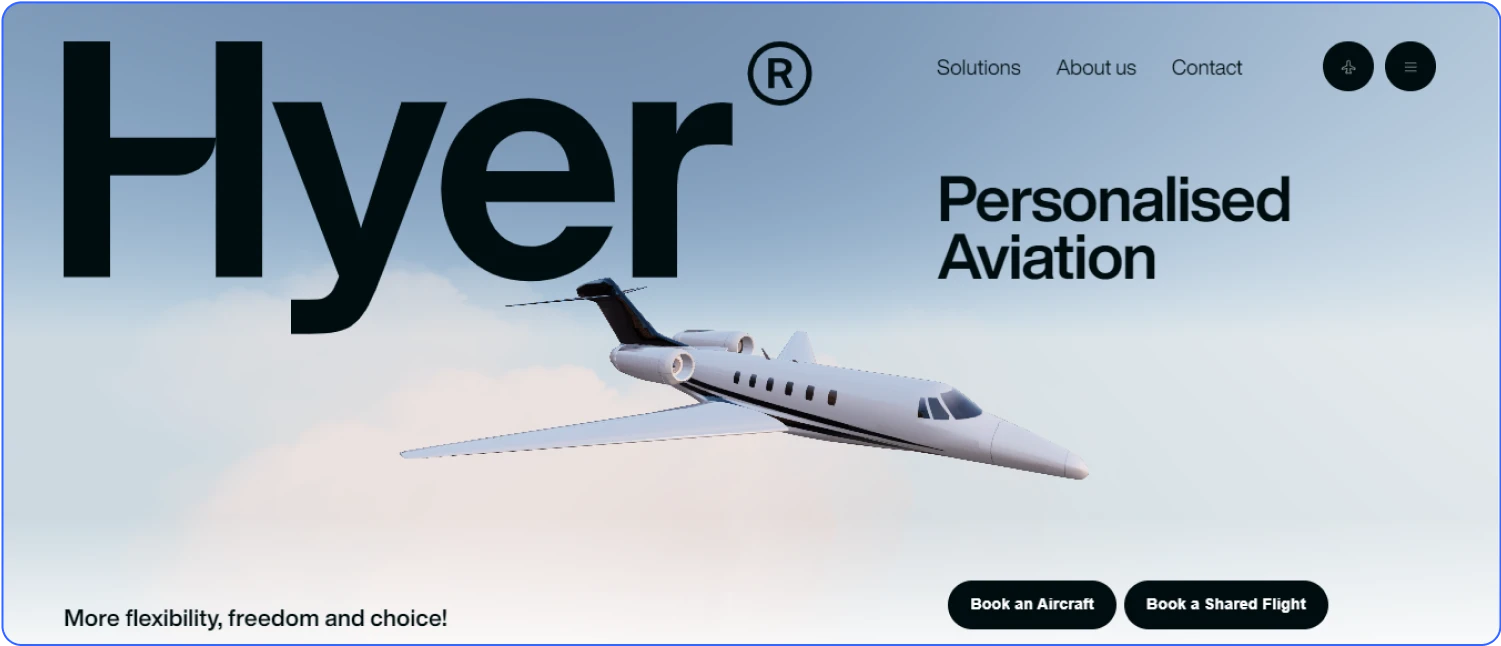
Hyer is a privet charter business. Here’s an explanation of why it is considered a high-converting site.
- Simple and Clear Messaging: Hyer’s website likely features straightforward messaging that clearly explains the benefits of its platform, making it easy for users to understand its value proposition.
- Engaging CTAs: The site uses persuasive CTAs that encourage users to sign up or learn more about the service, guiding them towards conversion.
- Customer Testimonials: Hyer may showcase success stories or testimonials from existing users, which adds credibility and encourages new visitors to convert.
- Efficient Sign-Up Process: A quick and easy sign-up process reduces friction, allowing users to get started with minimal effort.
- Mooi

Moooi presents creative luxury for a well-curated life. Here’s an explanation of why it is considered a high-converting site.
- Visually Stunning Design: Mooi likely features an aesthetically pleasing design that captivates visitors and holds their attention, making them more likely to engage with the content.
- Strong Branding: The site likely emphasizes brand identity through consistent visuals and messaging, helping visitors connect emotionally with the brand.
- Interactive Features: Mooi might use interactive elements like quizzes, product customizers, or virtual try-ons to engage users, making the shopping experience more enjoyable and increasing conversion rates.
- Clear CTAs: The site probably includes clear, persuasive CTAs that encourage users to take the next step, whether it’s making a purchase, signing up for a newsletter, or exploring more products.
These high-converting websites demonstrate the power of combining clear value propositions, compelling calls-to-action, and user-friendly designs. These sites effectively guide visitors toward conversion, setting a strong example for successful online business strategies.
Conclusion
Website is your most important channel for business communication and in fact, is the face of your brand. Delivering the right customer experience and using your website for customer acquisition are a few key metrics you should aim to achieve. Implementing REVE Chat’s digital customer engagement tools like Live Chat and Chatbots empowers businesses to engage customers in real-time with relevant responses that increase website conversion rate.
Hence, improving your average website conversion rate is so crucial, not just to convey your brand value proposition to your potential customers but also to act as a gateway to increase your sales conversions significantly.
Start improving your website conversion rates! Request a demo now.
FAQs (Frequently Asked Questions)
When using analytics on your website, what do we mean by the term ‘conversion’? These are some kinds of questions that usually come to the minds of the people. Some of the commonly asked questions related to the increase in website conversion rate are as follows:
1. What is a website conversion?
A website conversion is an event in a web analytics system that marks the completion of a website goal. Goals vary depending on the aims and type of your website and business.
2. When using analytics on your website, what do we mean by the term ‘conversion’?
Using analytics on your website refers to the act that the user takes to complete the main goal that impacts the website conversion rate.
3. What is the average conversion rate in the eCommerce industry?
The average ecommerce conversion globally is at 2.58% The average ecommerce conversion in the US is at 2.57%. The average e-commerce conversion globally is at 3.81%.
4. What is the key factor for better conversions for a website?
There are several key factors for better conversions for a website.
- User-centric design
- Clear, persuasive, & value-driven content
- Fast loading speed
- Strong Call-to-Action (CTA)
- Trust Signals
- Personalization
5. How to improve CRO on a website?
You can improve Conversion Rate Optimization (CRO) by fine-tuning various elements to turn visitors into customers. Here’s how you can enhance your CRO:
- Analyze User Behavior
- A/B Testing
- Enhance Page Load Speed
- Optimize for Mobile
- Clear and Compelling CTAs
- Simplify Navigation
- Leverage Social Proof
- Reduce Form Fields
- Address User Concerns
6. What is a good conversion rate for a website?
A good conversion rate for a website can vary widely depending on the industry, type of website, and specific goals. However, a general benchmark for a good conversion rate is typically between 2% and 5%.
7. Why is website conversion important?
Website conversion is important because it directly impacts the success and profitability of your online presence. It includes revenue generation, ROI, business growth, customer insights, competitive advantage, resource efficiency, and building customer relationships.

